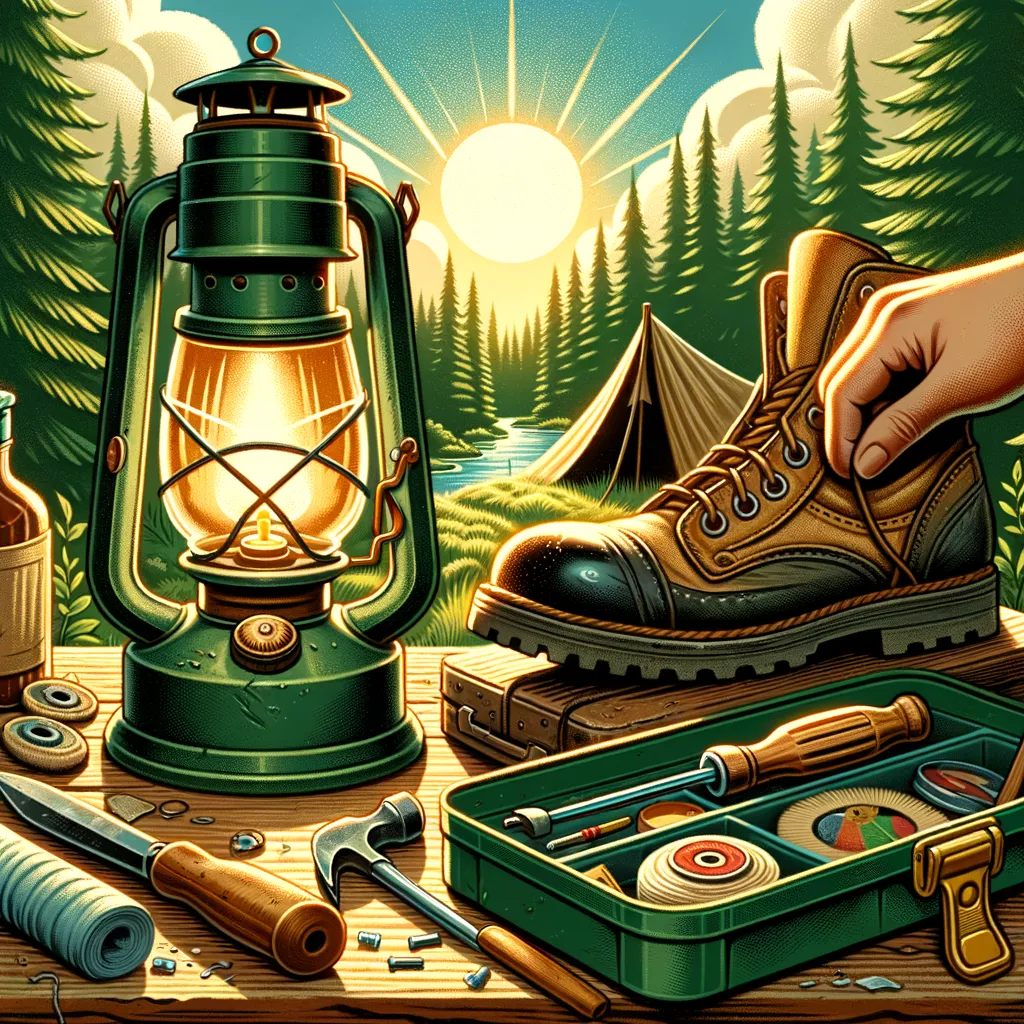Revive Your Vintage Camping Gear: A Parents’ Guide to DIY Restoration
Welcome to our comprehensive guide designed for parents who are eager to breathe new life into their cherished vintage camping equipment. Whether you’re a seasoned camper looking to pass down the family camping legacy, or new to the world of outdoor adventures, this guide is your one-stop solution for restoring those treasured pieces. For those who wish to learn more about the beauty of camping, visit our friends at Camping and get all the latest insights and tips. Additionally, for those hungry for a deeper dive into the history and essence of camping, enrich your knowledge at Camping Information.
Understanding the Importance of Restoration
Restoring vintage camping gear is not just about saving money; it’s about preserving memories and sustaining the environment. Every piece of camping equipment has a story to tell, and by restoring it, you’re not only keeping these stories alive but also promoting a sustainable lifestyle. Moreover, introducing children to camping with gear that has been in the family for generations can spark a deep appreciation for nature and history.
Assessing Your Equipment’s Condition
Before diving into the restoration process, it’s crucial to carefully examine each piece of equipment to understand its condition. Look for signs of wear and tear, rust, or damage. This initial step will help you identify the right restoration methods and materials needed to bring your cherished items back to life.
Step-by-Step Guide to Restoring Vintage Camping Equipment
Cleaning and Repairing Canvas Gear
Many vintage camping items, such as tents and canvas chairs, are made from canvas. Begin the restoration process by gently cleaning the canvas with a mixture of mild soap and water, avoiding harsh chemicals that may damage the fabric. For tears or holes, sewing patches or applying canvas repair tape can provide a durable fix.
Reviving Metal Equipment
Metal items like lanterns, cooking utensils, and camping stoves often succumb to rust over time. To restore these, start by removing rust using a wire brush or sandpaper. For heavily rusted items, a rust remover can be applied. Once clean, consider applying a coat of metal primer and paint to protect against future rust.
Refreshing Wooden Items
Wooden camping gear, such as walking sticks or frame backpacks, requires a gentle approach. Remove dirt and debris with a soft brush or cloth. If the wood is dry or cracked, applying a wood conditioner or oil can help restore moisture and protect the surface.
The joy of camping is not just in the adventure it brings, but also in the gear that helps us along the way. By restoring your vintage camping equipment, you not only preserve a piece of history but also create an opportunity for your family to connect with nature and each other on a deeper level.
Pro Tips for Parents: DIY Vintage Camping Gear Restoration
Welcome, parents, to your ultimate guide on DIY restoration of vintage camping gear! As you prepare to embark on this rewarding journey of bringing old camping items back to life, you’re not only creating lasting memories for your family but also instilling valuable lessons of sustainability and heritage preservation in your children. Whether it’s your grandparent’s canvas tent or a rustic wood-framed backpack, each piece holds a special place in the heart of your family’s camping tradition. Dive into our guide full of savvy tips and detailed instructions to turn your vintage finds into functional treasures.
Five Key Preparations Before Starting Your DIY Restoration
Before we jump into the nuts and bolts of restoration, let’s ensure you’re fully prepared. Here are five essential things parents should know:
- Assess with Care: Evaluate each item thoroughly to understand its condition. Look out for mold on fabric, rust on metal, and cracks in wood. Accurate assessment guides the choice of restoration method and prevents causing further damage.
- Research and Resources: Gather as much information as possible about the vintage equipment you’re restoring. Manufacturer guides, online forums, and videos can be invaluable. Also, ensure you have the right tools and materials before starting. Common supplies include mild soap, rust remover, sandpaper, wood conditioner, and sewing kits for canvas repair.
- Safety First: Restoration work can involve sharp tools and chemical products. Ensure you’re working in a well-ventilated area and wearing protective gear, such as gloves and masks, to safeguard your health and well-being.
- Patience is Key: Restoration is not a rushed process. Some methods, like removing rust or reconditioning wood, require time for the best results. Allocate enough time for each step and be patient as some items may need multiple treatments for a complete revival.
- Involve Your Children: This is an excellent opportunity to involve your kids in a hands-on learning experience. Tailor tasks to their age and ability, such as brushing off dirt or applying oil to wood, to foster a deeper connection between them and the great outdoors.
Embarking on Your Restoration Journey
Now that you’re prepped, it’s time to dive deep into the restoration process. Here’s a detailed exploration of techniques based on the type of material you’re working with:
Cleaning and Mending Canvas Gear
Canvas tents, backpacks, and chairs often bear the brunt of outdoor adventures. Begin by softly brushing away any loose dirt, followed by washing with a gentle soap solution. Address rips and tears by sewing on patches or using canvas repair kits available in outdoor stores. Always air-dry canvas items thoroughly to prevent mold and mildew.
Revitalizing Metal Hardware and Tools
Metal pieces add durability and functionality to camping gear but can deteriorate due to rust. Use a wire brush, steel wool, or sandpaper to scrub away rust spots. For persistent rust, consider using a commercial rust remover, following the manufacturer’s instructions carefully. Prevent future rust by applying a primer and rust-resistant paint, ensuring your equipment is ready for many more years of adventure.
Reconditioning Wooden Accessories
Wooden gear adds a touch of classic charm. Start by cleaning off any debris. Apply wood conditioner or oil to rejuvenate dry or weathered wood, following the product’s directions for the best application method. Regular maintenance with oil can prevent drying and cracking, extending the life of these precious items.
Whether it’s repairing a vintage camp stove or refurbishing an old canvas tent, restoring camping gear is an art that melds tradition with sustainability. By investing time and effort into this process, you ensure your family’s camping gear carries stories of past adventures into future excursions. Most importantly, this journey of restoration teaches our children the value of preserving history, caring for our belongings, and protecting the environment for generations to come.
Happy camping and happy restoring!
Disclaimer
The articles available via our website provide general information only and we strongly urge readers to exercise caution and conduct their own thorough research and fact-checking. The information presented should not be taken as absolute truth, and, to the maximum extent permitted by law, we will not be held liable for any inaccuracies or errors in the content. It is essential for individuals to independently verify and validate the information before making any decisions or taking any actions based on the articles.





